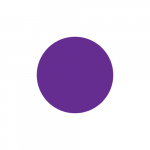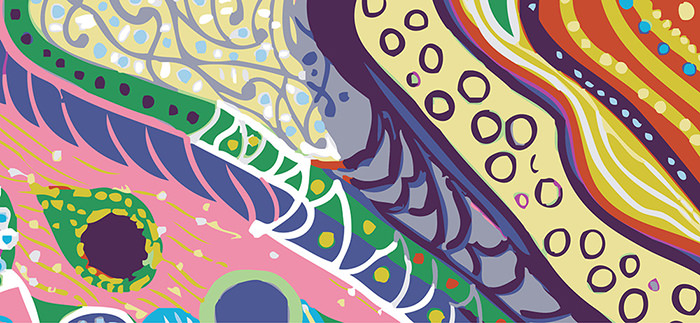 General criticisms of the IMF and World Bank
General criticisms of the IMF and World Bank  Central banks
Central banks
Main institutions of macroeconomics
Development banks
Before we explore development banks, it is important to define what ‘development’ means in today’s conventional economic terms. ‘Development’ can be defined as an aspiration to improve economic conditions, standard of living, and eliminating poverty.1In 1986, member states of the United Nations adopted the Declaration on the Right to Development, affirming development as an inalienable human right.
Development banks are financial institutions established to promote and finance economic development. The scope of development banks can vary based on whether they are multilateral or national institutions. Multilateral development banks (MDBs) are financial institutions established by two or more countries. They can take the form of a global organisation irrespective of the region, such as the World Bank (which has global membership). There are also multilateral development banks operating on a regional scale, such as Asian Development Bank or African Development Bank. Finally, National Development Banks (NDBs) usually conduct their activities within the territory of the nation-states.
Development banks proliferated in the wake of World War II. Western countries established development banks to finance the reconstruction of their countries which were destroyed during the war, such as KfW (1948) of Germany. During the same period, the countries of the Global South also founded national development banks in Asia, Africa, and Latin America, as an effort to promote economic development for fast industrialisation. The examples of this trend include the Development Bank of the Philippines (1947), the Industrial Development Bank of Turkey (1950), the Brazilian Development Bank (1952), the Industrial Development Bank of Kenya (1954), and the NIDC Development Bank in Nepal (1959).
Historically, states established national development banks to promote economic development and to finance specific development projects (such as infrastructure or establishing a new industry). Such development projects are often capital-intensive, meaning they require large capital investments. This makes them risky for investors and entrepreneurs. Furthermore, NDBs provide credit to individuals, firms, and specific sectors of the economy that commercial banks are not willing to serve.2de Luna-Martínez, J., & Vicente, C. L. (February 2012). Global Survey of Development Banks. World Bank.
Today there are over 250 NDBs worldwide, holding $5 trillion in assets.3Studart, R., & Gallagher, K. P. (October 2016). Infrastructure for Sustainable Development: The Role of National Development Banks. Boston University Global Economic Governance Initiative. This makes them significant actors in the national, regional, and global economy. The interest in the NDBs have increased over the last decade, largely due to their countercyclical role. Private financial institutions are often pro-cyclical in nature, meaning their lending activities correspond to economic cycles. In other words, private financial institutions (such as commercial banks) increase their lending during economic boom and decrease during recessions. On the other hand, NDBs can act in countercyclical terms during the crisis.
This feature of NDBs became quite evident during the 2008 global financial crisis. Between 2007 and 2009, the combined loan portfolio of development banks increased from $1.16 trillion to $1.58 trillion dollars. In nominal terms, this was a 36% increase in three years, and it was much higher than the 10% increase in commercial bank credit for the countries surveyed during the same period.4de Luna-Martínez, J., & Vicente, C. L. (February 2012). Global Survey of Development Banks. World Bank. This countercyclical tendency is considered crucial, as it functions as a fix to the failures of the market.
Despite having a potential for making a positive contribution to the human rights agenda, development banks have not always pursued such goals. We have already discussed adverse effects of the development agenda of the World Bank, a global development bank. Several other development banks pursued similar approaches to development, undermining the fulfilment of human rights of those affected by the development projects.
For example, in 2019 women’s groups from Ixquisis, Guatemala filed a complaint about the Interamerican Development Bank (IDB). The women’s groups, which are primarily composed of Indigenous women, accused the IDB of violation of its ‘Environmental and Social Sustainability Policy’ and three ‘Operational Policies’ (on Environment and Safeguards Compliance, on Gender Equality in Development, and on Indigenous People). What happened was that the IDB had approved several hydropower projects in the region. These projects caused significant economic and environmental damage such as water shortage and pollution, which damages the harvests. This then reduces the income of the community and causes poverty.5Both ENDS. (5 November 2019). Guatemalan Women Force Development Bank to Investigate Gender Policy Violations.
In December 2018, more than 200 civil society organisations around the world published an open letter to states and development financiers, where they also note that “development banks themselves have human rights obligations and a critical role to play in ensuring that their investments are not causing or contributing to threats or attacks against [human rights] defenders”.6Coalition for Human Rights in Development. (December 2018). Human Rights Defenders are a Cornerstone of Sustainable Development. As owners or shareholders of development banks, the states must ensure that development goals do not harm local communities, their rights, or natural resources.
Furthermore, development banks should have mechanisms that enable public participation for effective development. Development banks can play critical roles ensuring development is sustainable and equitable.
 General criticisms of the IMF and World Bank
General criticisms of the IMF and World Bank  Central banks
Central banks
Footnotes
- 1In 1986, member states of the United Nations adopted the Declaration on the Right to Development, affirming development as an inalienable human right.
- 2de Luna-Martínez, J., & Vicente, C. L. (February 2012). Global Survey of Development Banks. World Bank.
- 3Studart, R., & Gallagher, K. P. (October 2016). Infrastructure for Sustainable Development: The Role of National Development Banks. Boston University Global Economic Governance Initiative.
- 4de Luna-Martínez, J., & Vicente, C. L. (February 2012). Global Survey of Development Banks. World Bank.
- 5Both ENDS. (5 November 2019). Guatemalan Women Force Development Bank to Investigate Gender Policy Violations.
- 6Coalition for Human Rights in Development. (December 2018). Human Rights Defenders are a Cornerstone of Sustainable Development.

